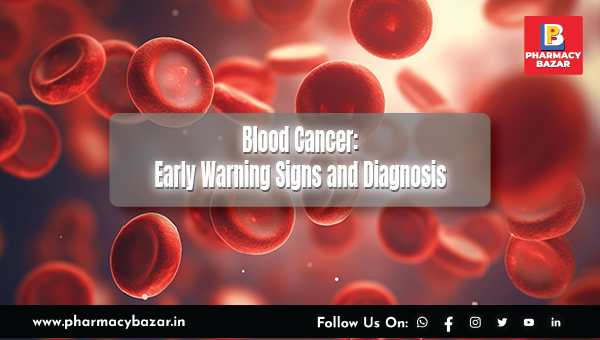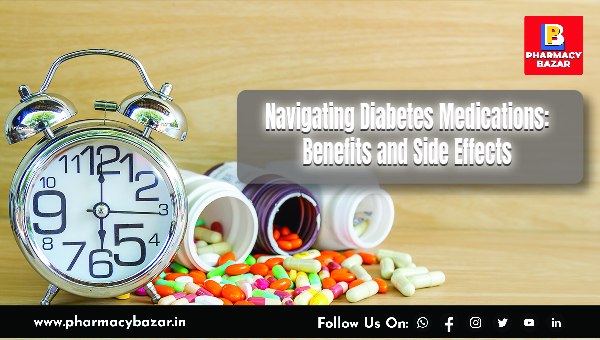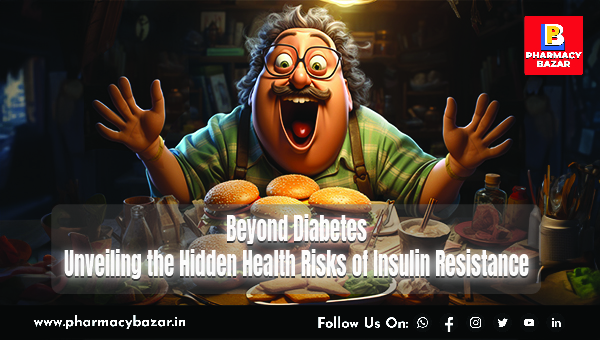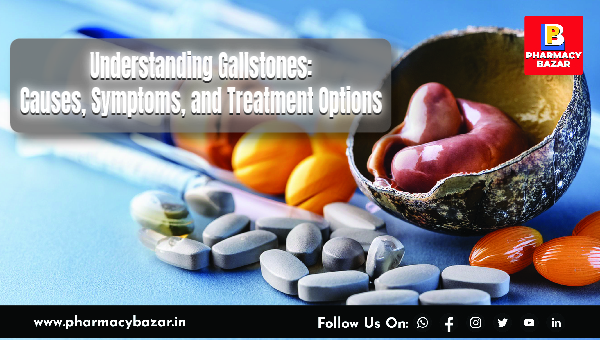Understanding Gallstones: Causes, Symptoms, and Treatment Options
Jul 21, 2024
Introduction
Imagine enjoying a hearty meal with your loved ones, only to be interrupted by an unexpected and severe pain in your abdomen. This pain, which seems to come out of nowhere, could be an indication of gallstones—a common yet often misunderstood health condition. Gallstones can cause significant discomfort and, if left untreated, lead to serious complications. In this comprehensive article, we will explore the causes, symptoms, and treatment options for gallstones, providing you with the essential knowledge to understand and manage this condition effectively.
What Are Gallstones?
Gallstones are solid particles that form in the gallbladder, a small organ located beneath the liver. The gallbladder's primary function is to store and concentrate bile, a digestive fluid produced by the liver. Bile helps in the digestion of fats. Gallstones can vary in size from as small as a grain of sand to as large as a golf ball. They can be composed of cholesterol, bilirubin, or a mix of these substances.
Types of Gallstones
There are two main types of gallstones:
1. Cholesterol Gallstones: These are the most common type, accounting for about 80% of all gallstones. They are primarily made of hardened cholesterol and can develop if there is too much cholesterol in the bile or if the gallbladder does not empty efficiently.
2. Pigment Gallstones: These stones are smaller and darker, composed mainly of bilirubin, a substance produced from the breakdown of red blood cells. Pigment gallstones are more common in individuals with certain medical conditions, such as cirrhosis, biliary tract infections, or sickle cell anemia.
Causes of Gallstones
The exact cause of gallstones is not always clear, but several factors can increase the risk of their formation. These include:
1. Genetics: A family history of gallstones can increase your risk, suggesting a genetic predisposition.
2. Obesity: Being overweight or obese is a significant risk factor. Excess body weight can lead to increased cholesterol levels in bile, which can promote the formation of cholesterol gallstones.
3. Diet: A diet high in fat and cholesterol and low in fiber can contribute to gallstone development. Rapid weight loss through extreme dieting can also increase the risk.
4. Age and Gender: Gallstones are more common in women and older adults. Women are more prone due to the influence of estrogen, which can increase cholesterol levels in bile.
5. Medical Conditions: Certain medical conditions, such as diabetes, liver disease, and Crohn's disease, can increase the risk of gallstones.
6. Medications: Some medications, such as hormone replacement therapy and cholesterol-lowering drugs, can increase the risk of gallstone formation.
Symptoms of Gallstones
Interestingly, many people with gallstones do not experience any symptoms and are unaware they have them. These are referred to as "silent gallstones." However, when symptoms do occur, they can range from mild to severe and typically include:
1. Abdominal Pain: The most common symptom is a sudden and intense pain in the upper right abdomen, often referred to as biliary colic. This pain can radiate to the back or right shoulder blade and usually lasts from a few minutes to several hours.
2. Nausea and Vomiting: Gallstone attacks can cause nausea and vomiting, especially after eating fatty or greasy foods.
3. Jaundice: If a gallstone blocks the bile ducts, it can cause jaundice, a yellowing of the skin and eyes.
4. Fever and Chills: These symptoms may indicate an infection of the gallbladder or bile ducts, which requires immediate medical attention.
5. Changes in Stool and Urine Color: Gallstones can cause pale-colored stools and dark urine due to the disruption of bile flow.
Diagnosing Gallstones
If you experience symptoms suggestive of gallstones, your healthcare provider may recommend several diagnostic tests:
1. Ultrasound: This is the most common and non-invasive test used to detect gallstones. It uses sound waves to create images of the gallbladder and identify the presence of stones.
2. Blood Tests: Blood tests can help determine if there is an infection, inflammation, or blockage in the bile ducts.
3. CT Scan: A computed tomography (CT) scan provides detailed images of the gallbladder and bile ducts and can detect complications from gallstones.
4. HIDA Scan: A hepatobiliary iminodiacetic acid (HIDA) scan involves injecting a radioactive tracer into the bloodstream to track the flow of bile and assess the functioning of the gallbladder.
5. MRCP: Magnetic resonance cholangiopancreatography (MRCP) uses magnetic resonance imaging (MRI) to create detailed images of the bile ducts, gallbladder, and pancreas.
Treatment Options for Gallstones
Treatment for gallstones depends on the severity of the symptoms and the risk of complications. The main options include:
1. Watchful Waiting: If you have silent gallstones that do not cause symptoms, your doctor may recommend a watchful waiting approach, monitoring for any changes or the development of symptoms.
2. Medications: Certain medications can help dissolve cholesterol gallstones, but this treatment is typically reserved for individuals who cannot undergo surgery. It can take months or even years for the stones to dissolve, and they may recur after stopping the medication.
3. Surgery: Surgical removal of the gallbladder, known as cholecystectomy, is the most common and effective treatment for symptomatic gallstones. There are two main types of cholecystectomy:
Laparoscopic Cholecystectomy: This minimally invasive procedure involves making small incisions in the abdomen and using a laparoscope (a thin tube with a camera) to remove the gallbladder. It has a shorter recovery time and less postoperative pain compared to open surgery.
Open Cholecystectomy: In this traditional surgery, a larger incision is made in the abdomen to remove the gallbladder. It is typically reserved for complicated cases or when laparoscopic surgery is not feasible.
4. Endoscopic Retrograde Cholangiopancreatography (ERCP): This procedure is used to remove gallstones from the bile ducts. An endoscope (a flexible tube with a camera) is inserted through the mouth and guided to the bile ducts, where special tools can be used to extract the stones.
5. Lithotripsy: Shock wave lithotripsy uses sound waves to break gallstones into smaller pieces that can pass through the bile ducts and be eliminated from the body. This method is less commonly used and is suitable only for certain types of gallstones.
Prevention of Gallstones
While it may not be possible to prevent gallstones entirely, certain lifestyle changes can reduce your risk:
1. Maintain a Healthy Weight: Aim for a healthy weight through balanced eating and regular physical activity. Avoid rapid weight loss or extreme dieting.
2. Eat a Balanced Diet: Consume a diet rich in fiber, whole grains, fruits, and vegetables. Limit the intake of high-fat and high-cholesterol foods.
3. Exercise Regularly: Regular physical activity can help maintain a healthy weight and reduce the risk of gallstone formation.
4. Stay Hydrated: Drink plenty of water to keep bile production and flow in balance.
5. Manage Underlying Health Conditions: Control medical conditions like diabetes and liver disease through appropriate treatment and lifestyle modifications.
Complications of Gallstones
If left untreated, gallstones can lead to serious complications, including:
1. Cholecystitis: Inflammation of the gallbladder, often caused by a blockage from gallstones. This condition can cause severe pain, fever, and infection.
2. Pancreatitis: Gallstones can block the pancreatic duct, leading to inflammation of the pancreas. This condition can cause severe abdominal pain, nausea, vomiting, and requires immediate medical attention.
3. Cholangitis: Infection of the bile ducts, which can cause jaundice, fever, and severe abdominal pain. It is a medical emergency that requires prompt treatment.
4. Gallbladder Cancer: Although rare, chronic inflammation from gallstones can increase the risk of gallbladder cancer.
Extra Information: Dietary Considerations
Recent studies have highlighted the importance of diet in managing and preventing gallstones. Here are some dietary tips to consider:
1. Increase Fiber Intake: High-fiber foods like fruits, vegetables, and whole grains can help reduce cholesterol levels in bile and lower the risk of gallstone formation.
2. Healthy Fats: Incorporate healthy fats, such as those found in fish, nuts, and olive oil, while avoiding trans fats and saturated fats.
3. Small, Frequent Meals: Eating smaller, more frequent meals can help maintain steady bile production and prevent the formation of gallstones.
4. Limit Refined Carbohydrates: Reduce the intake of refined carbohydrates, such as white bread, pasta, and sugary snacks, as they can contribute to gallstone formation.
Conclusion
Gallstones are a common health condition that can cause significant discomfort and lead to serious complications if left untreated. Understanding the causes, symptoms, and treatment options for gallstones is crucial for effective management and prevention. By making informed lifestyle choices and seeking timely medical attention, you can reduce the risk of gallstone-related complications and maintain a healthy gallbladder. If you suspect you have gallstones or experience symptoms, consult your healthcare provider for an accurate diagnosis and appropriate treatment plan. Remember, proactive measures and a healthy lifestyle are key to keeping your gallbladder in optimal.
DISCLAIMER:
This article is the property of Pharmacy Bazar and is protected by copyright laws. The information provided in this article is for educational and informational purposes only and is not intended to be a substitute for professional medical advice, diagnosis, or treatment. Always seek the advice of a qualified healthcare provider with any questions you may have regarding a medical condition. Never disregard professional medical advice or delay in seeking it because of something you have read in this article. The author and publisher of this article do not endorse any specific treatments, procedures, or products mentioned in this article
Recent Post

Blood Cancer: Early Warning Signs and Diagnosis

Navigating Diabetes Medications: Benefits and Side Effects

Revolutionizing Cancer Treatment: How Unleashing T Cells' Energy Could Transform Immunotherapy

The Power of Lower Back Stretches: Benefits and Best Yoga Asanas for a Healthy Spine

8 Health Conditions That Could Be Due to Magnesium Deficiency

Unlocking Brain Health: How Lifestyle Choices Impact Cognitive Functions

When Speech Takes a Surprising Turn: Unraveling Foreign Accent Syndrome

The Optimal Time to Take Your Vitamin D Supplement: Insights and Best Practices

Beyond Diabetes: Unveiling the Hidden Health Risks of Insulin Resistance

India's Pharmaceutical Rise: From $65 Billion to $130 Billion by 2030 - A Journey of Growth and Opportunities

